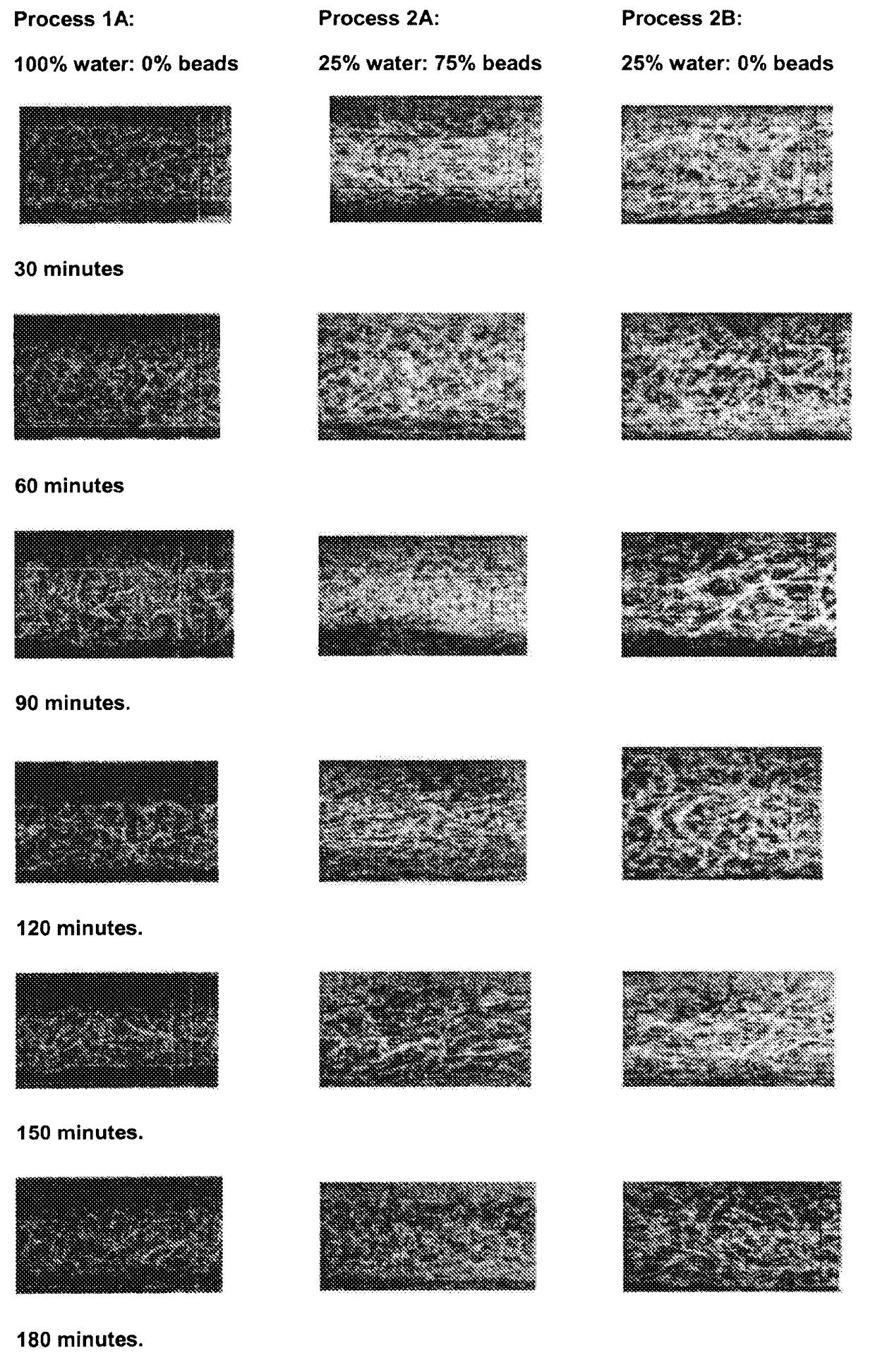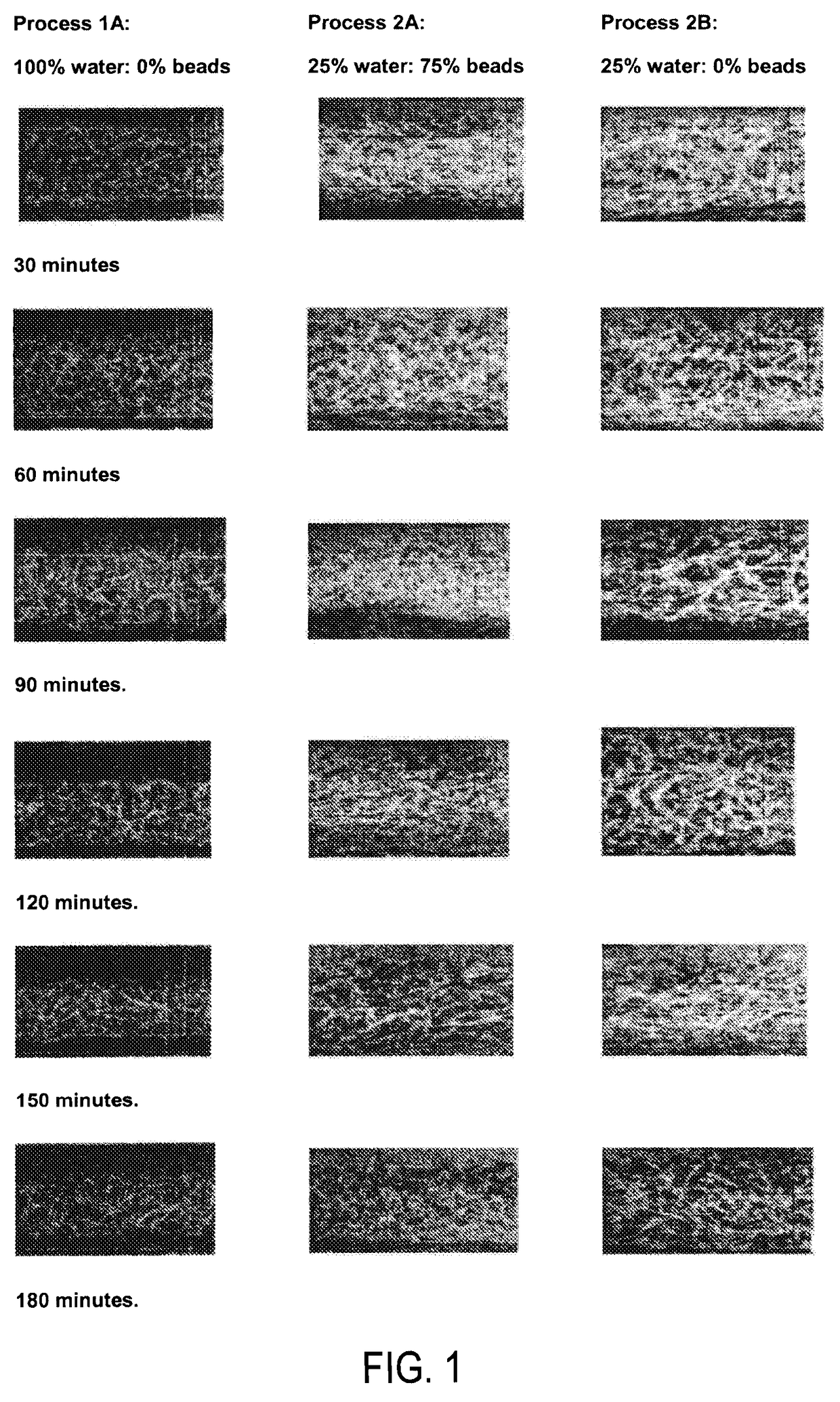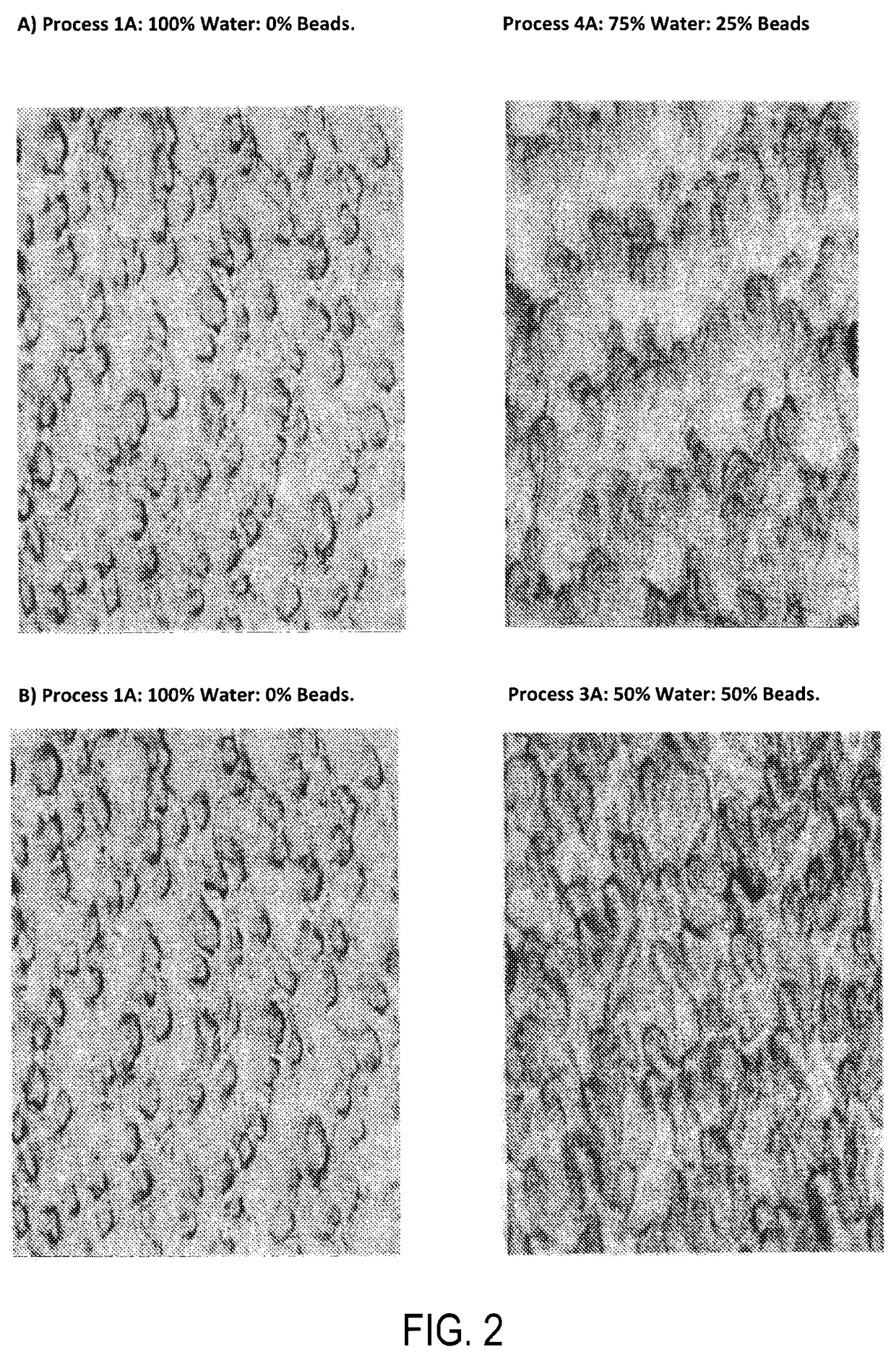Method for treating a substrate made of animal fibers with solid particles and a chemical formulation comprising a colourant
a technology of solid particles and animal fibers, which is applied in the direction of dyeing process, tanning treatment, animal husbandry, etc., can solve the problems of long process time, inability inability to produce large quantities of polluting and environmentally damaging effluents, etc., to achieve significant environmental benefits, facilitate the use of only limited amounts of water, and reduce the quantity of water used in the method of invention
- Summary
- Abstract
- Description
- Claims
- Application Information
AI Technical Summary
Benefits of technology
Problems solved by technology
Method used
Image
Examples
example 1
Hides
[0191]Treatment trials were carried out using a set of trial and control conditions (see Table 1). Thus, the trials involved the use of a preferred treatment apparatus, performed according to the method of the invention whilst the control was carried out in the same apparatus but without the presence of the solid particulate material. Four pairs of matched-side samples (20 cm×45 cm) of chrome-tanned hide were cut out from a whole wet-blue hide that tanned with 6% basic chromium sulphate (33% basicity, 25% Cr2O3). Marked samples were neutralized together to pH 6.1 in 100% water using sodium formate and sodium bicarbonate, 0.2% of dispersing agent (Invaderm LU, TFL Ledertechnik GmbH, Weil Am Rhein, Germany) was also added to avoid aggregation in the subsequent dyeing processes. The weight of each leather sample (wet, but without excess water) was measured and used for calculating the total volume of dyeing float and the quantity of dye. Dyeing trials were carried out over 3 hours...
example 2
Hides Using Alternative Dye Compositions
[0197]Further dyeing experiments were conducted using Trupocor Red 2B, Trupocor Red EN and Trupocor Brown GST. These dyes cover a range of solubility, reactivity and penetration characteristics and therefore served as useful model systems for comparing the performance of the bead containing process against conventional and low water control processes. A comparison of the dyes is shown in the following table.
Table Comparing Performance Attributes of Trupocor Red 2B, Trupocor Red EN and Trupocor Brown GST Dyes:
[0198]
PerformanceTrupocorTrupocorTrupocorCharacteristicRed 2BRed ENBrown GSTRelative Penetration433-4Rate (1-5 Scale, 1 islowest, 5 is highest)Solubility At 60° C.1003030(IUF 201)Migration Into PVC4-533-4(IUF 442)
[0199]Experiments were conducted on bovine crust leathers that were retanned and fat liquored and subjected to a dyeing process. The dyeing of leather during the post tanning stage is almost universal for shoe, garment, upholstery...
example 2a
h Trupocor Red 2B
[0202]In order to prepare undyed crust leathers, wet-blue hides (thickness 1.8 mm) were retanned and fat liquored according to the process described in Table 3 and Table 4 above.
[0203]In this case, after chrome tanning, the substrate was treated with an acrylic retanning agent (Trupotan RKM), then a vegetable tannin (Mimosa WS) and followed by dyeing. After dyeing the substrate was fatliquored (Truposol LEX and Truposol AWL), then fixed with formic acid and washed.
[0204]Vacuum-dried crust leathers were cut to several equal sized pieces (20 cm×30 cm) having average dry weight of 89 g (±1 g). All of the sample pieces were adjusted to pH 6.2 with treatment cycles carried out in Dose drums (Ring Maschinenbau GmbH (Dose), Lichtenau, Germany) (model 08-60284 with an internal volume of 85 L) following the procedures in Table 3 and 4. Teknor Apex™ grade TA101M (Polyester—PET) supplied by Teknor Apex UK were used in the trials. The ullage (i.e. free space) in the drum for al...
PUM
 Login to View More
Login to View More Abstract
Description
Claims
Application Information
 Login to View More
Login to View More - R&D
- Intellectual Property
- Life Sciences
- Materials
- Tech Scout
- Unparalleled Data Quality
- Higher Quality Content
- 60% Fewer Hallucinations
Browse by: Latest US Patents, China's latest patents, Technical Efficacy Thesaurus, Application Domain, Technology Topic, Popular Technical Reports.
© 2025 PatSnap. All rights reserved.Legal|Privacy policy|Modern Slavery Act Transparency Statement|Sitemap|About US| Contact US: help@patsnap.com



